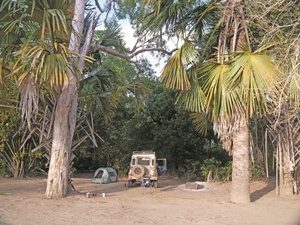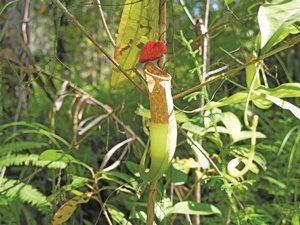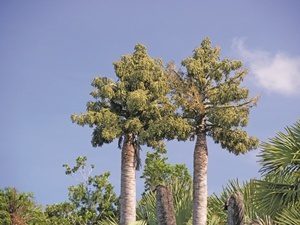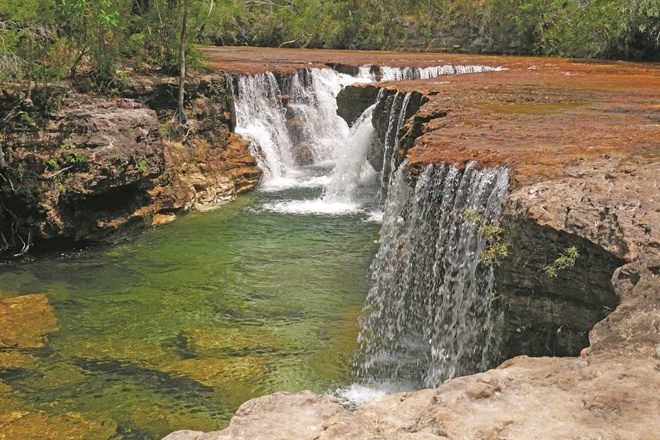


CAPE York is so many things to so many people! Exploring, camping and fishing in a wonderfully remote tropical region with hugely diverse landscapes, the four-wheel-drive challenges and corrugations, the fantastic fishing, the amazing culture and history and so on. Explore Cape York
Underlying everything of course is the unique nature of the Cape, that is what makes this remarkable region the paradise it is. As a former ranger and bush guide of the area – and resident – I’d thought I’d pass on a little knowledge of the more notable natural features of the region. First up, heading north from Bramwell Junction on either road, you’ll soon enter large expanses of low shrubby heath country.
This is occasionally known as the ‘wet desert’ because of the abundance of creeks interlacing the countryside. I should mention that the Bypass Rd does just that – it runs along the higher part of the sandy heath country and so bypasses the abundant crystal-clear streams you encounter on the Telegraph Track. Where does this water come from?Explore Cape York
Well, one theory is that water flows from New Guinea beneath Torres Strait to reappears in northern Cape York. The reality is the vast area of sand and sandstone that makes up the ‘wet desert’ is a huge sponge during the wet season and absorbs much of the monsoon rain. The water then flows out of literally thousands of beautiful springs, which then become the magical crystal-clear streams you see.Explore Cape York
Eliot Creek, on which you’ll find both Fruit Bat and Eliot falls, is a great example of a substantial spring-fed creek. Eliot Creek is one of the many spring-fed streams that feed the mighty Jardine River, Queensland’s largest perennial river. Anyway, if you walk downstream from Eliot Falls, even a little way, you’ll spot various small springs and soaks bubbling out of the sandstone, often festooned with carnivorous pitcher plants.
The pitchers of these plants contain a liquid that attracts insects, which the plant then digests. The sand the pitcher plants grow in is so poor that they need the extra sustenance from insects in order to grow! Have a look inside a pitcher and you’ll often find ant heads, which apparently aren’t so easily digested. Another stunning but much bigger plant you’ll come across if you travel through Rinyirru National Park – formerly Lakefield – is the majestic corypha palm.Explore Cape York
Growing along the riverbanks and flood plains, this tree is awesomely wild. It grows to about 35 years old and then, for the first and only time in its life, it flowers, with the biggest flower head of any plant on Earth. Then the tree sets fruit and dies! Corypha palms are also able to endure the hot baking dry season and then have their roots inundated by water over the dramatic wet season.Explore Cape York
You’ll also see these palms along various rivers of the Cape, mainly on the flood plains of westward flowing rivers. Something to look out for – in fact, you can’t miss them! Travel-wise, we’re waiting to see how the wet season finishes off this month. Much of the northern and inland Cape has had a cracker wet season, and the Peninsula Developmental Rd has been officially closed for a few months.
If the monsoon season winds up in late March or early April, then the roads will start opening shortly afterwards. They will be a mess as usual, until the road crews get to work.Explore Cape York
It’s a wait and see situation. Until then, enjoy Easter and the bush and beach, wherever you are.
 Bush ‘n Beach Fishing Magazine Location reports & tips for fishing, boating, camping, kayaking, 4WDing in Queensland and Northern NSW
Bush ‘n Beach Fishing Magazine Location reports & tips for fishing, boating, camping, kayaking, 4WDing in Queensland and Northern NSW









